Flying Kalashnikov ('Spiegel online', Germany)
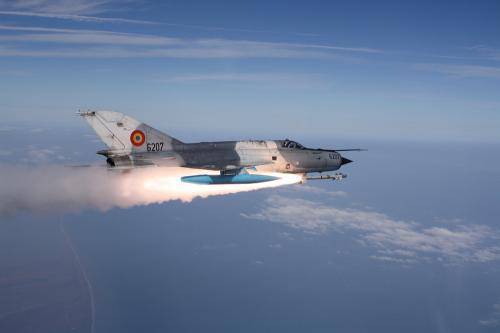
From the translator: Some time ago, Spiegel started the “Eines Tages” column, which literally means “One fine day,” but in meaning it is equivalent to our “Once upon a time”, fairy tales begin in these German words legends Old articles, articles that should not be forgotten are reprinted in this section. Thanks to our scout and windruf translator for finding this article and sending it to me for translation. It was not easy to translate, the article was written emotionally, but I hope that I was able to convey the feelings of the author.
While Uwe Bayreuter is rolling out its MiG-21 onto the runway of the Preschen military airfield, at some point he was overwhelmed with memories: he served 10 for years as a pilot of the 3 th fighter squadron of the National People’s Army of the GDR (NDA GDR) "Vladimir Komarov" Brandenburg. 10 years this 32 old man gave a military career. He flew in all three squadron links, was promoted to Major of the NNA GDR, and always flew MiG-21: more than 1300 sorties, flew around 840 hours. And today, December 14, 1990, it's over.
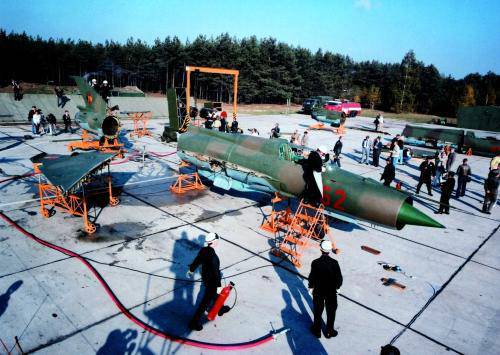
German Air Force archive
The summer pilot 32 looked through the flashlight once more: once the fighter jets were forced by the platform, now empty, and the concrete as if swept away by a janitor, the airfield looks deserted. Bayreuter releases the brakes and MiG, taking off, rushing along the strip with a roaring afterburner. And when the plane leaves the ground after a few seconds, Bayreuter still notices another figure on the runway - the squadron commander, standing at attention and saluting, escorts the last MiG-21 to the gloomy December sky. “Still, someone noticed that here and now the era of these planes is ending,” Bayreuter recalls the unusual gesture of the Comet.

Photo: Manfred Ziban (State Archives)
With the reunification of Germany in the 1990 year, after the 34 years of its existence, the army of the GDR gradually began to obey the Bundeswehr. And while part of the NNA GDR soldiers hoped to continue the service, their equipment was destroyed or given away by the Bundeswehr. Thus, in Germany, the time of the flying legend ended, because with the removal of the MiG-21 from service, the most common military aircraft in the airspace between the Elbe and the Oder disappeared stories.
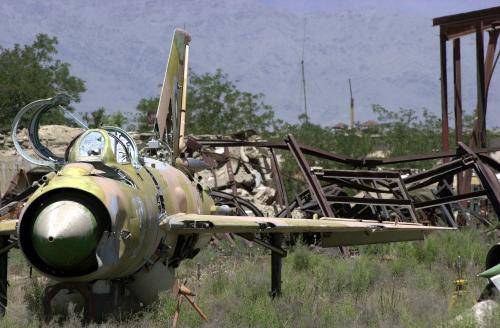
Photo: US Department of Intelligence
Recycling for 50 000 brands
Their cancellation usually takes place very quickly and without pathos. The last Bayreuter flight lasted only 29 minutes. The end point was Rothenburg on the River Naiss, the central gathering point fleet former troops of the Air Force and Air Defense NNA GDR. Soon, the decommissioned vehicles will be loaded onto trucks and sent from here to Dresden to the ELBE aircraft plant, where they will be disposed of for 50 marks per aircraft. Back the pilot also rides on the ground, in the bus.
Thirty years ago, the memorable silhouette of the MiG-21 first appeared in the sky over the GDR. No one on earth knew then that the famous Soviet design bureau of Mikoyan and Gurevich with his new aircraft with one turbine and deltoid wing had a great breakthrough. Already in the 1953 year, when the arms race was in full swing, MiG engineers were working on a completely new fighter: it had to become very maneuverable and fly through the sky at a speed twice the speed of sound.
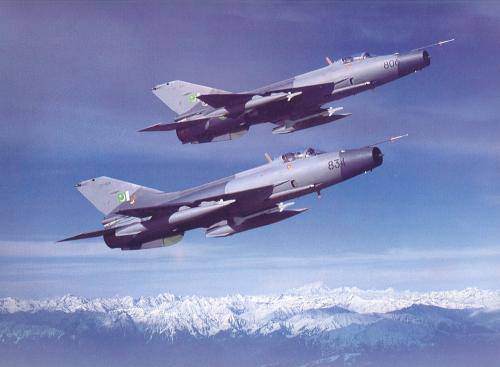
Photo: Pakistan Air Force
Four years it took designers, this time was spent on experiments with different forms of the wing and fuselage. And now - 10 machines of the trial series rolled out of the hangar of the aircraft plant No. XXUMX in Tbilisi. The prototype with a triangular wing and a thin fuselage, called the "E-31", in 5, received the name by which it would soon become known as the main fighter of the armies of the Eastern bloc - the MiG-1957.
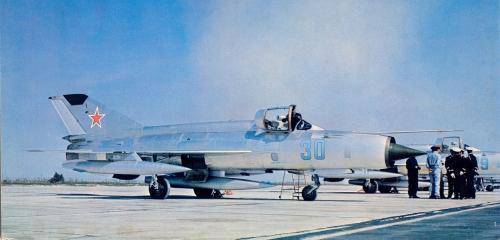
Photo: US Department of Intelligence
"Air Kalashnikov"
When the 1959 of the year began the serial production of these fighter-interceptors, which could rise to a height of more than 18 000 meters, one of the prototypes set a new world speed record - an impressive 2 388 kilometers per hour. The original idea of the Soviet aircraft builders - to create a powerful and at the same time easy-to-operate machine - came true. For two years, all the Warsaw Pact countries have put this fighter into service with an inimitable air intake cone in the nose section. They were followed by Finland, Yugoslavia, India, Indonesia, Iraq and Cuba. The maneuverable and reliable MiG-21, which could take off even from a simple field without a runway, in a short time broke all sales records. "Air Kalashnikov", so it was called, comparing in reliability with the legendary Russian AK-47.

Photo: Matthias Heikel (State Archives)
Moreover, the GDR was in a special position among buyers, as the owner of the portal claims http://www.mig-21.de/, Holger Muller: “The most western country of the Warsaw Bloc was the first country outside the USSR in which these fighters were based in the GSVG air force (Group of Soviet Forces in Germany)”. “The 16 Air Force, located here, was the spearhead of the USSR Air Force and therefore received the newest technology,” says Muller, who served 20 years ago in the ANA aircraft technician and has since fallen in love with this famous fighter.

Photo: Holger Muller
In the GDR, aircraft enthusiasts had almost no chance of ignoring the MiG-21 - by the mid-seventies in the GDR Air Force the number of these machines had grown to 400. And about 500 was the Red Army. “This number of MiG-21 fighter jets has never been assembled anywhere else in such a small area,” says Muller.
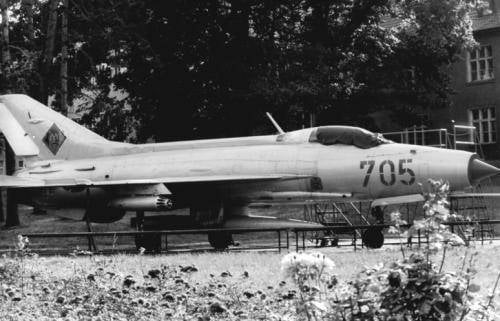
Photo: Matthias Heikel (State Archives)
Western military strategists were alarmed
For the air fleet of NATO, this ultra-high-speed fighter, which in a few years has spread in Eastern Europe, the Caribbean islands and the Mediterranean, has become a potential danger. For the first time, Western observers noticed the MiG-21 at the military parade in Tushino in 1961 year. In NATO, he was dubbed "Fishbad", the Western military could only speculate about the characteristics of the MiG-21.
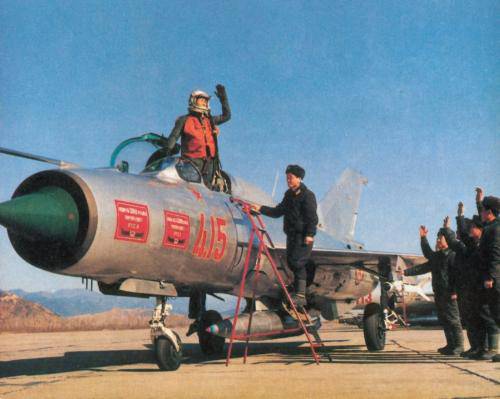
Photo: Holger Muller
During the Vietnam War, everything changed: with a single-seat Soviet fighter, American pilots first encountered the Asian jungle. American pilot Jack Broughton, who flew the Thunderchief at the F-105, later talked about his first meeting with the North Vietnamese MiG-21: “He flew up so quickly that I first thought that my car had broken down and I needed to eject” . An air battle began, during which Broughton managed to reach the tail of the MiG, but the fighter disappeared as quickly as it appeared. Broughton recalls with insult: "I could not pursue him, he just disappeared."
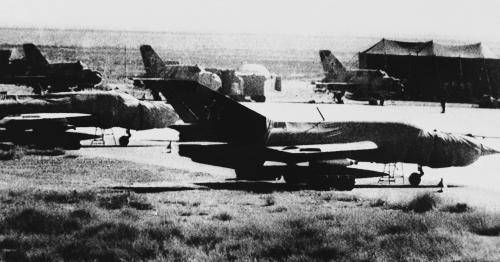
Photo: AR
Military strategists on the other side of the Iron Curtain were worried - apparently, an enemy fighter was flying in the sky, surpassing their interceptors in all parameters. Worse, it was so cheap to manufacture that it appeared at once in all the hot spots of the Cold War: Cuba, the Middle East, and Southeast Asia. The American magazine Popular Mechanics made the appropriate calculations comparing the MiG-21 with the two-seater F-4 American Phantom, which also flew in Vietnam: “For each enemy pilot and plane worth 1 000 000 dollars, we lose two pilots and a plane which costs four times as much. ”
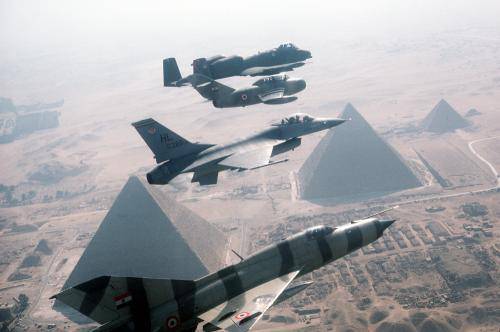
Photo: US Department of Intelligence
Technically inferior, but economically superior
To finally get detailed information about the MiG-21, the CIA tried to carry out a secret operation and take possession of one of the cars in the GDR. Günther Laudan, who fled to the Federal Republic of Germany, was to return to East Berlin and convince the NNA pilot to move to West Germany with his MiG-21 aircraft. But Stasi learned about this plan. Laudan was arrested and sentenced to life in prison, he was later sent to the west.
Despite the fact that after a few years the Americans managed to get one of the much-desired MiG-21 aircraft and test it in the desert of Nevada - they could not stop the victorious march of these machines all over the planet. MiG-21 flew everywhere, and in the air over the Arctic Ocean, and over the savannas of southeast Africa. The secret of success of these machines in their reliability, coupled with a simple and at the same time, confident aerodynamics. “For many third world countries, simple and reliable MiG equipment was as easy to understand as possible,” Müller explains. China even began to produce it in its factories. By the end of the sixties, the MiG-21 had become a key player on the world stage.
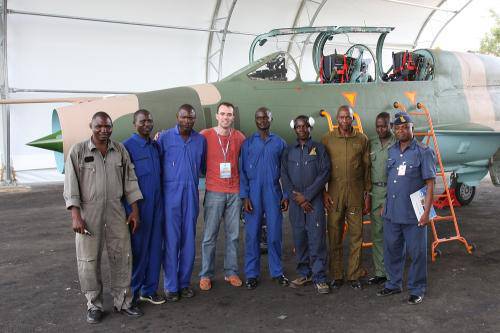
Photo: Holger Muller
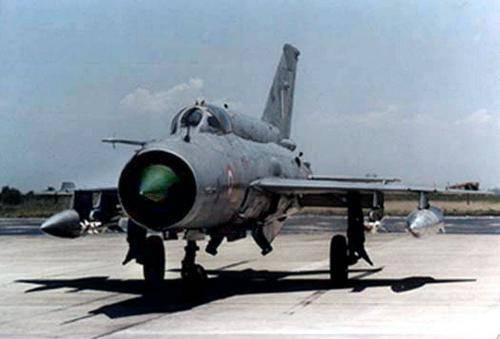
Photo: AR
The situation did not change even after the USSR ceased production of these machines in 1985, which by that time produced about 10 000 units. About twenty different modifications of this nimble fighter were in service: single and twin, fighter and interceptor, fighter-bombers and reconnaissance - many of them could be armed even with nuclear weapons. weapons. Despite the fact that the technical characteristics of the MiG-21 inferior to the newest American aircraft F-15 and F-16, economically it was much more profitable.
Arriving West
When the eastern bloc collapsed in 1991, the MiG-21 was in service in many armies of the Warsaw Pact countries. Relatively cheap maintenance and cheap and affordable parts allowed this car to fly from socialism to capitalism at supersonic speeds. The Mikoyan and Gurevich Design Bureau, now called the Russian Aircraft Corporation MiG, noticed the potential of their vehicles and, in the early 90s, offered the market a modified model of this more than thirty-year old aircraft with more modern weapons and new onboard electronics.
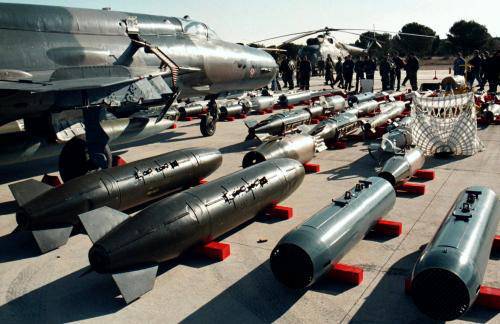
Photo: Reuters
And although F-104, a potential enemy of the MiG-21 Fighter, has long disappeared in the West, the success story of the Soviet machine continues. Ironically, this aircraft is now in service with the NATO countries, the very military alliance, against the aircraft of which the MiG once rose into the sky. The Czech Republic, Hungary, Poland, Bulgaria, Romania and Croatia - six countries whose air force is flying the MiG-21, have joined the Western alliance.
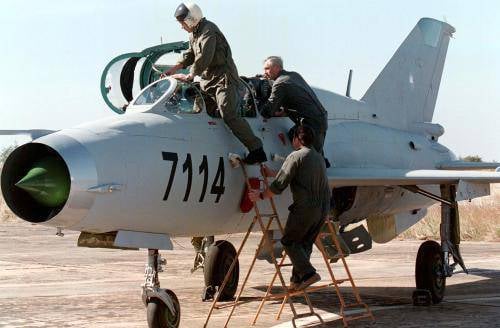
Photo: Reuters
Information